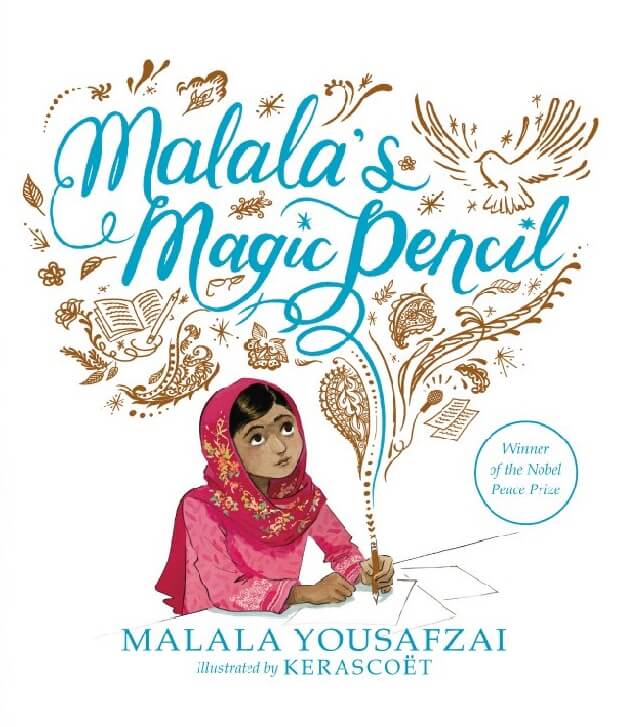28 Dec / Malala’s Magic Pencil by Malala Yousafzai, illustrated by Kerascoët

 As the youngest winner of the Nobel Peace Prize – in 2014 at age 17 – Malala Yousafzai is an internationally recognized icon for girls’ education and empowerment. Her story here speaks to the youngest readers, instilling potential and hope, rather than highlighting the fear and violence that has been too much a part of young Malala’s life. While older readers will surely remember her miraculous recovery after being shot in the head by Taliban gunmen on her way to school, none of that savage brutality is depicted here.
As the youngest winner of the Nobel Peace Prize – in 2014 at age 17 – Malala Yousafzai is an internationally recognized icon for girls’ education and empowerment. Her story here speaks to the youngest readers, instilling potential and hope, rather than highlighting the fear and violence that has been too much a part of young Malala’s life. While older readers will surely remember her miraculous recovery after being shot in the head by Taliban gunmen on her way to school, none of that savage brutality is depicted here.
Using the “magic pencil” – inspired by a children’s television series about a boy whose pencil could magically draw whatever was needed, including food, protection, anything to help others – as her narrative leitmotif, Malala’s wish for her own magic pencil manifests itself in her drive to get an education. Enabled especially by her father, Malala escapes tradition: “because where I came from, many girls weren’t allowed to become what they dreamed of.” She bypasses the law: “powerful and dangerous men [who] declared that girls were forbidden from attending school.” She learns to speak out: “Why not me?” First she wrote about her experiences, and found she couldn’t stop. Her voice carried throughout the world: “I spoke for all the girls in my valley who couldn’t speak for themselves.” And no one could stop that tenacious voice, not even the “dangerous men [who] tried to silence [her].”
With this recent picture book, Malala completes her self-titled trilogy which now covers all age groups: for adult readers, I Am Malala: The Girl Who Stood Up for Education and Was Shot by the Taliban, co-written with lauded international journalist Christina Lamb debuted in 2013; award-winning author Patricia McCormick shared the cover of I Am Malala: How One Girl Stood Up for Education and Changed the World, the young readers edition, which appeared in 2014.
This time, Malala’s story gets an artistic enhancement, with illustrations by Kerascoët, who are actually the French husband-and-wife team of Sébastian Cosset and Marie Pommepuy, award-winningly recognized for their graphic and cartooning accomplishments. Indeed, Kerascoët’s swirling, moving panels conjure Malala’s miraculous story that begins “Do you believe in magic?” and concludes with what has become a worldwide rallying cry for education: “One child, one teacher, one book and one pen can change the world.”
Believe: Malala’s magic is most certainly real.
Readers: Children
Published: 2017
